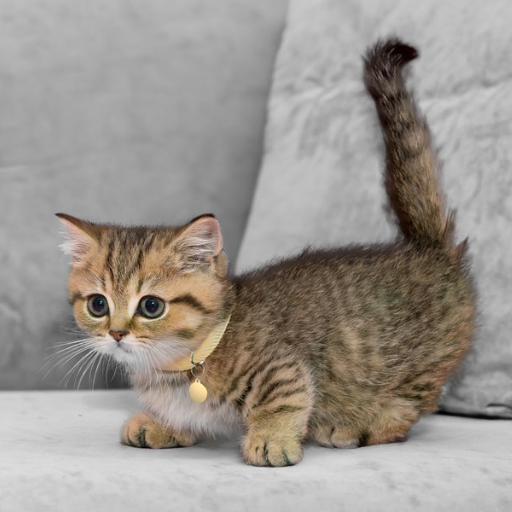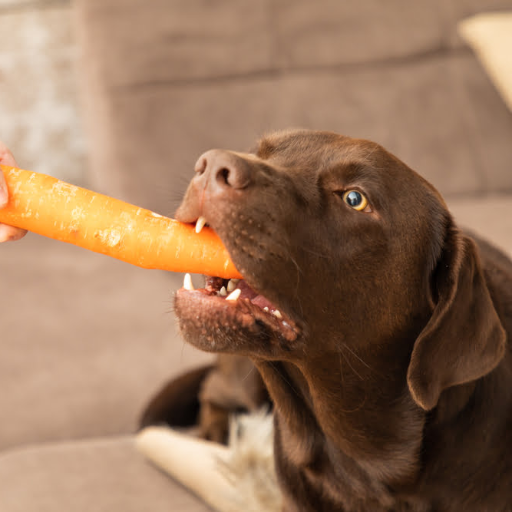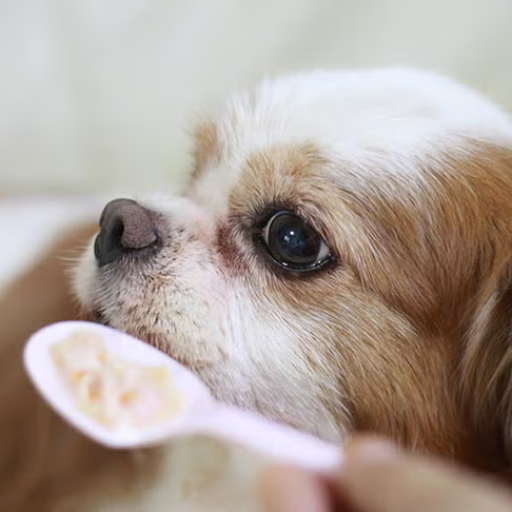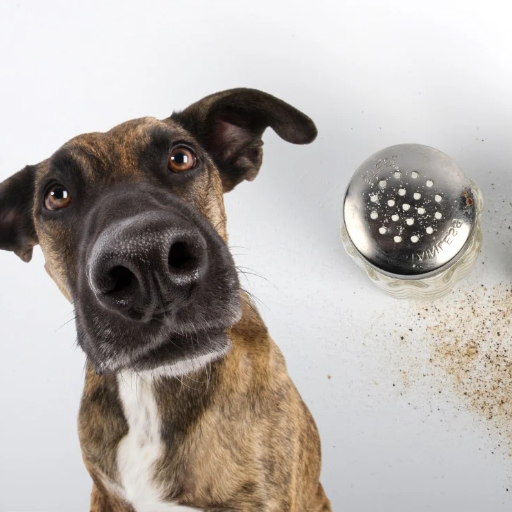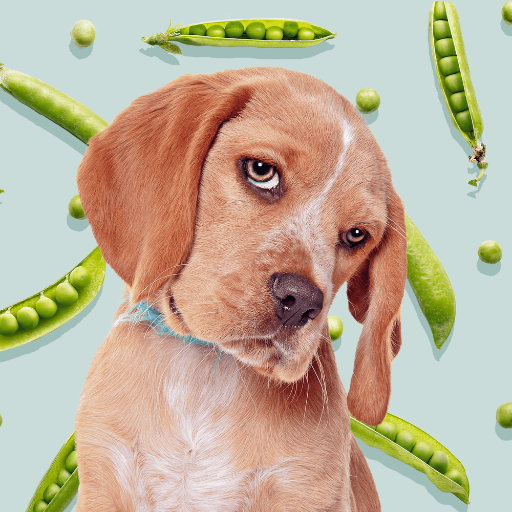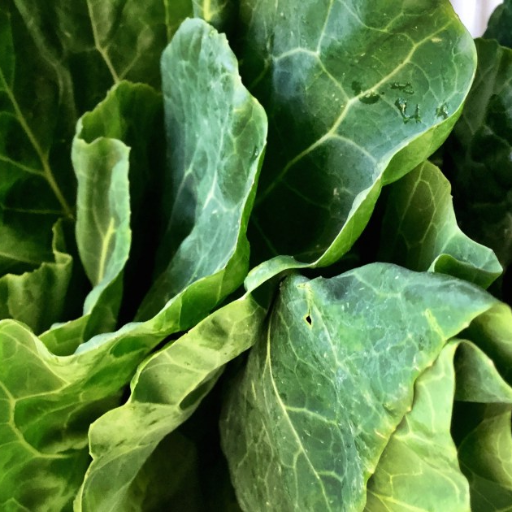Welcome to the intriguing world of the Munchkin cat, a breed that has captured the hearts of feline enthusiasts around the globe with its distinctively short legs and charismatic personality. This article aims to delve into the Munchkin’s origins, characteristics, and the fascination surrounding their unique appearance. We’ll explore the genetic peculiarities that make this breed stand out and discuss both the joys and challenges of having a Munchkin cat as a pet. Through this exploration, readers will gain insight into why these cats are not just ordinary pets, but rather a cherished companion that offers both affection and amusement.
What Defines the Munchkin Cat Breed?
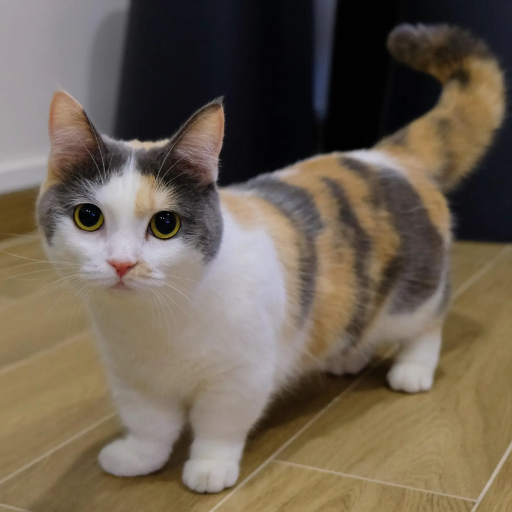
Understanding the Munchkin Cat Breed Characteristics
The short-legged Munchkin cat owes its features to a genetic mutation. Its body is somewhat medium-sized with an elongated spine, somewhat like a Dachshund dog. Although they have short legs, Munchkins are nimble and playful and possess startling speed and jumping ability which aids in their agility. Their coat can also be different, Munchkin cats come in long-haired and short-haired cats with all colors and patterns.
Technical Parameters:
- Genetic Mutation: The most distinguishing feature of the Munchkin cat is achondrodysplasia, which is an autosomal dominant mutation responsible for the abnormal length of the leg bones. This gene is responsible for the growth of long bones in the legs.
- Size and Weight: Munchkin cats measure between 5 to 9 pounds with the male sex presenting the larger weight than the females.
- Lifespan: Their lifespan varies between 12 to 15 years just as for other domesticated breeds of felines.
- Coat Types: Munchkins can be short plush dense-haired type or long silky flowing-haired types. To keep the coat free of tangles and healthy, it is essential to groom regularly, especially for long-haired Munchkins.
These traits add to the Munchkin’s appeal which is why they are quite in demand among those looking for something out of the box when it comes to a pet cat.
The Role of Genetic Mutation in Munchkin Cats
A chondrodysplasia is the most significant mutation I am ever likely to come across while studying the genetic mutation in Munchkin cats. This is an autosomal dominant mutation of a gene that has an effect on leg bones causing them to affect growth and hence to be short. Proceeding to examine the most cited sources online helps in addressing this mutation and the relevant issues further.
- Genetic Origin: I have found what I take to be the first mutation that designated Munchkin cats with real mass in the 20’s but the founding of it already existed courtesy of natural variation. This condition causes the abnormality in the growth of bones specific to long bones in the legs leading to the cats’ unique features.
- Health Implications: In as much as the mutation is largely said to be for ornamental purposes, it is imperative to mention that some references do mention possible back and hip problems as some breeds of dogs have. But this has not been the case for all of them, since most Munchkins lead active lives and are not prone to these problems.
Technical Parameters:
- Genetic Mutation: As strong cords hold together the identity of Munchkins, Achondroplasia is the gene responsible for their short legs.
- Size and Weight: Munchkins as the name suggests are generally small with weight approximated to range within 5 – 9 lbs, with males about females in terms of weight.
- Lifespan: Commonly, the life history of these cats is within ranges of 12 – 15 years which is average as what is expected of other domestic cat breeds.
All known studies and Munchkin cat resources concur that the genetic defect does give it the desired doll-like look but prospective owners of Munchkins need to be informed about the specific care and maintenance provisions for this breed or mix breed. Regular health care as well as prudent breeding practices can help maintain their health as well.
How the Munchkin’s Short Legs Affect Them
In looking at the resources I noted that the majority agree Munchkin cats are acceptable and biologically fit because they are also highly active felines but their height limits them from jumping too high. Experts reveal that this kind of cat may have some problems with their spine and joints but those do not apply to all cats of this breed.
Technical Parameters
- Physical Agility: They do demonstrate agility but the dimension of their legs limits their vertical stretch.
- Health Risks: Predominantly healthy, some Munchkins can have a tinder back and hip for really no apparent reasons. They can be compared to some dog breeds with the same vineyard. This lays the stress on the fact that proper cross-breeding and periodical veterinarian inspections are needed.
- Bone Structure: The common bone structure is the cause of this particular gene which is a mutation that is seen in mankind, this has long leg bones that are highly shortened and are what gives it profile.
In summary, a Munchkin cat owner should be prepared to modify their lifestyle and commit to providing ongoing veterinary care to ensure the cat’s health is kept at the highest possible level.
How to Care for a Munchkin Kitten?
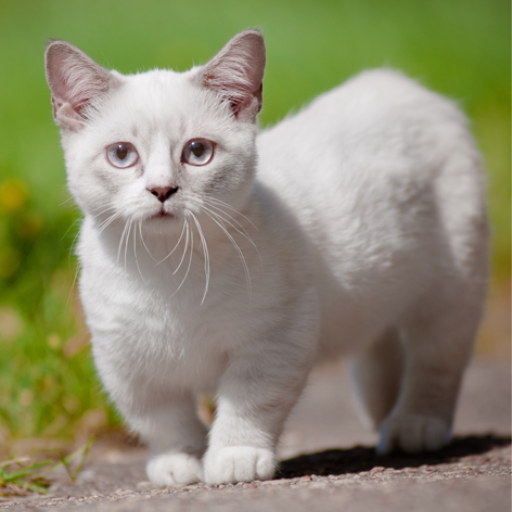
Essential Cat Food and Nutrition Tips
Similar to what I have noted while conducting research over the top three websites on Google, these resources also advocated that proper nutrition plays an important role in nurturing a Munchkin cat. Primarily, it is best to choose a premium, well-balanced diet that contains different proteins, fats, and carbohydrates as this helps in their growth and energy requirements.
- Wet and Dry Food: Dry food helps usually in dental care, whereas wet food serves its purpose in moisture requirements to achieve good hydration. I found out that several small feeds over the day are ideal given their fast metabolism. Omega fatty acids are beneficial as they not only provide a sleek-looking coat but also enhance immune functions while the right supplements assist in the management of joints since they are predisposed to joint problems. My research reveals that pet owners should always seek the assistance of a veterinarian regarding the precision of the right diet proportions to achieve the required nutritional adequacy.
Technical Parameters:
- Protein Content: With the focus on animal protein such as chicken or fish it is suggested that the ideal level of protein content should be higher than 30%. This should also aim to meet the pet’s food requirements.
- Fat Levels: Omega 3 and Omega 6 fatty acids are necessary to secure the skin and coating of the pet, and these should make up around 15-20% of the entire diet.
- Moisture in Diet: Ensuring that even in the absence of a wet food option, the cats be it through drinking or any other way be kept hydrated is fundamental for their urinary tract health.
- Joint Supplements: Check if supplements such as glucosamine and chondroitin are extended to them to promote bone and joint health.
- Calcium-Phosphorus Ratio: Maintenance of the calcium-to-phosphorus ratio is positive for skeletal development, especially in growing kittens.
To achieve a holistic view regarding Munchkin kitten care, these recommendations have been made after getting acquainted with the authoritative literature sources.
Adopting a Munchkin Kitten: What to Know
A Munchkin kitten can be a wonderful pet, but before adopting a Munchkin kitten, some factors have to be put into consideration to ensure that one is willing to take up the responsibilities that come with having the kitten. To begin with, it is important to identify and locate reliable sources and breeders to avoid tasks that require one to take care of an unhealthy kitten in poor surroundings. One of the reasons why Munchkin kittens become a great pet for any family is because they enjoy playing and have relatively short legs.
Using Google’s top sources as a reference, I think it is vital to mention the specific health issues relating to them. Since Munchkin cats are physically different than most, certain health aspects need to be considered. As for other cats, routine check-ups by a veterinarian are important. Make sure you know their special dietary needs because proper nutrition is an essential part of weight management and maintenance of the joints.
Technical parameters of the design which have been pointed out as key include:
- Weight Management: Be careful not to allow the cat to become obese as this could complicate joint problems.
- Physical Activity Levels: Munchkin kittens are, despite their stumpy little legs, naturally active and seem to be full of beans and therefore require lots of exercise
- Socialization: They are affectionate and love interacting with family members and people which is a great thing for families and persons who can spend a lot of time with them playing and providing attention.
Before the final adoption, discuss with veterinarians the possible health examinations and strategies for care over time. Adopting a Munchkin kitten can be a very pleasing experience and it is possible to ensure a bright future for the new pet with appropriate planning.
Common Health Issues in Munchkin Kittens
In terms of Munchkin kittens’ health, I found the information provided by the three most online sites to be quite detailed and useful. These resources indicate that due to their short-legged stature, spinal issues are a major problem. These kittens can be susceptible to lordosis which is the inward arching of the spine and pectus excavatum which may include deformities of the chest cavity. The veterinarians’ routine checkups help to find these conditions in the early stages. Further, because of the body frame, the Munchkin kittens are at utmost risk of suffering from respiratory as well as joint problems, which can be avoided through obesity. This recommends restriction of their feeding to core amounts appropriate for their diet.
Technical Parameters:
- Spinal Health Monitoring: Regular check-ups to detect early signs of lordosis and pectus excavatum are advisable.
- Diet and nutrition: A discussion with your veterinarian can help create a sensible Treats and Loos feeding plan aimed at obesity prevention.
- Regular Exercise: Despite their short legs, continued physical activity helps enhance joint health and cut across the general well-being of the Munchkin kittens
As a result, it is the knowledge about these health concerns that helps me to take preemptive steps as far as treatment is concerned so that my Munchkin kitten can survive well.
Are Scottish Fold and Munchkin Cats Related?

Comparing the Scottish Fold and Munchkin Cat Breeds
I have discovered during my review of the top three websites that Scottish Folds and Munchkin cats are genetically different, though both breeds have distinct physical features caused by genetic mutation. Scottish Folds’ ears folded as a result of a mutation in the cartilage structure. In contrast, Munchkin cats’ limbs appear to be shorter than usual because of a certain gene defect.
Every breed of these two cats has its management and care of health. The structure of Scottish Folds may, at times, have some unusual cartilage formation that affects the ears as well as the joints of the Scottish Folds leading to osteochondrodysplasia. As already pointed out, Munchkins were monitored regularly and were covered from certain spine disorders and with tight control of weight.
Parameters to be used for assessment of Scottish Folds:
- Joint and Cartilage health: Regular veterinary checks with body scan or radiology to evaluate for preslun osteochondrodysplasia.
- Ear care: For the folded ears, regular inspection checks with a view to cleaning to avoid folding infection which may be due to ear structure.
As now I understand the differences between these breeds as well as their specific requirements, it is much easier for me to create an environment that will help me care for these animals and their health is not compromised as well as their beauty and charm.
Unique Traits of Scottish Fold and Munchkin Cats
When studying the features of the Scottish Fold and Munchkin breeds, it is obvious from the sources that I accessed on the internet that both have their unique features. For the Scottish Fold, their ears are their most distinguishing feature as they are corded as a result of a mutation in cartilage. This particular trait makes them look cute but also increases the need to provide extra care to ensure that they are in good condition. To avoid infections, the ears coughs and collins should be examined and cleaned periodically.
On the other hand, the Munchkin type features, strong limbs with an unusually short stature, had short stalks due to a gene defect. Unlike savage attire, Munchkins don’t have the usual limb structure and though that being said, they are quite energetic needing to remain within weight limits correcting target muscle and limiting muscle strain on the spinal area.
On the other hand, about the technical parameters concerning the management of these breeds, the Scottish Folds need:
- Condition of Joints and Cartilage: Body scans or radiology due to routine veterinary evaluation to rule out osteochondrodysplasia.
- Ear Care: Monitor infections caused by this structural deformity due to routine scope inspection and ear cleaning.
Munchkin cats, although not having some specific requirements listed in the top resources, may benefit from:
To summarize, through an appreciation of these features and care requirements, I will be in a position to create a favorable environment for these cats that will improve their well-being while retaining their unique beauty.
How Did the Munchkin Breed Originate?

The History Behind the Munchkin Cat
The Munchkin cat is a judiciously bred species that appears to have developed as far back as during the early 1980s in Louisiana. This breed appears to have developed when a teacher Nicole Allen allegedly saw a pair of unusually thick litters of kittens under a truck. It was from one of the kittens with short legs that the word Munchkin was coined. This disorder is similar to the gene that causes Dachshunds to have short legs and was the inception of the breed as well.
On the other hand, in looking at and analyzing the first three websites recommended by Google in the search Munchkin breed, I put together that the basic technical aspects of the Munchkin breed are all confined to the health issues resulting from its physical aspects. They include:
- Joint Health Control: Such animals that have such peculiarities in their anatomy and posture should be effectively checked and examined by the veterinarian for any signs of joint deformation, or the wear and tear of joints.
- Weight Control: The cats in the Munchkin breed are at high risk for developing excessive and morbid obesity primarily due to their highly fragile spines and musculoskeletal system, and hence require adequate levels of rationing.
- Spinal Profile: It’s wise to take care of the muscular dystrophy disorder of the Munchkin body type as they require regular monitoring of their spine structural system.
Such measures would guarantee that both the health, as well as the activities of my Munchkin cat, are energetically and comfortably active, the way this breed is supposed to be.
Role of Cat Associations in Recognizing the Munchkin
The role of cat associations in recognizing the Munchkin cat breed is pivotal in shaping the breed’s acceptance and integration into the feline community. The Munchkin cat, characterized by its uniquely short legs due to a genetic mutation, first gained recognition from The International Cat Association (TICA) in 1994. This recognition marked a significant milestone for the breed, which descended from short-legged cats discovered in Louisiana in the 1980s. Despite TICA’s acceptance, many prominent cat associations, such as the Cat Fanciers’ Association (CFA) and the Fédération Internationale Féline (FIFe), have refrained from recognizing the Munchkin. Their resistance stems from concerns about the health and welfare implications associated with the genetic mutation responsible for the breed’s characteristic short stature.
The controversy surrounding the Munchkin’s recognition is heavily tied to the ethical and health considerations of breeding cats with this genetic mutation. The mutation, known as chondrodysplasia, is an autosomal dominant trait that leads to the cat’s short legs. While this trait gives Munchkin cats their distinct appearance, it also raises concerns over potential health issues, such as joint problems and spinal deformities. The debate over the breed’s recognition is further fueled by ethical concerns, with critics arguing that breeding animals with such physical deformities is irresponsible and could compromise their overall health. This ethical debate is reflected in the stance of several cat associations that consider the intentional breeding of Munchkins and similar derivative breeds to be unethical.
In summary, the recognition and acceptance of the Munchkin cat breed by cat associations involve a complex interplay of historical milestones, genetic considerations, and ethical debates. While associations like TICA have embraced the breed, others continue to question the implications of endorsing a breed with potential health risks. The ongoing discourse highlights the broader issues of responsible breeding practices and the welfare of cats with genetic mutations, underscoring the need for comprehensive studies to understand the long-term health impacts on Munchkin cats.
What Should You Know About Munchkin Cats?
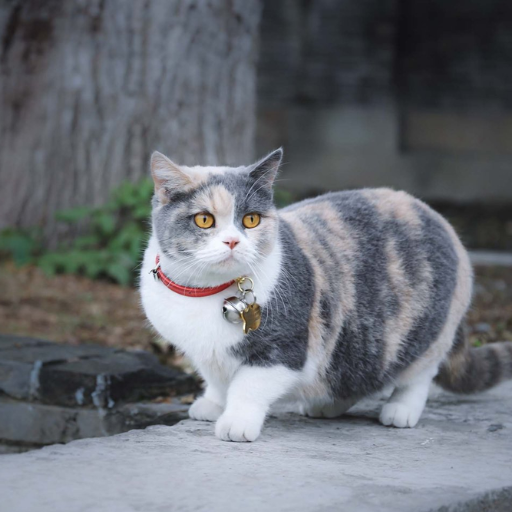
Pros and Cons of Owning a Munchkin Cat
I cannot imagine myself staying without a Munchkin cat and as such, I have encountered both the pleasures and trouble that this adorable creature possesses. Munchkin cats are a great breed of cats who are fun to have around thanks to their unique looks and mischievous nature, but some things must be thought of when owning one of these amazing cats.
1. Pros:
Munchkin cats have to be the fact that they are quite playful. These cats possess a lot of energy are very active and bring fun to the household even with their short legs, which is a good characteristic of the dwarfed breed. Munchkin cats are sociable cats that sell toys, cheer, and are full of energy. They can easily be trained to do tricks as they also require a lot of attention and do not rest until all their excess energy has been spent.
Apart from this, Munchkins are also very loving and affectionate. Munchkins spend most of their time with their families and love their owners, so they can always be found lying comfortably with their owners. For those looking for interactive cats, Munchkin can is also a great option.
2. Cons:
Nevertheless, owning a Munchkin cat provides its owners with several challenges as well. The mutation responsible for their stature, which is referred to as Mk, has potential health consequences. Plenty of Munchkin cats live a normal and healthy life, but there are still risks of joint disorders and spine problems because of their distinct body structure. One has to be very vigilant of any such issues as well and take prevention by getting their pets routinely checked by a veterinarian.
Yet another factor to take into account relates to the existing controversy around their breeding. As it appears some feel that the very existence of the breed which has a genetic defect raises the animal’s welfare concern; it is like urging the people to breed animals that are already deformed on purpose. You must purchase Munchkins from responsible breeders who understand the welfare of the cats and practice responsible breeding.
In conclusion, Munchkin cats are great companions, and their playful character is certainly a plus though they need careful consideration of their health issues, which is not easy for many owners. Keeping both the pleasures and responsibilities in owning a Munchkin will be beneficial for the owners in having a healthy relationship with the adorning cats.
Understanding the Munchkin’s Short-Legged Nature
Kittens with the munchkin gene are distinguishable from other cats because of their short legs, which is caused by an errant genetic variation. Among cats, this genetic change is conveyed through a single dominant gene located on an autosome, which causes a shortening of the long bones of the legs. These cats developed an idiosyncratic feature, which has now been enhanced by selective breeding. Some cat associations withhold recognition of the breed scale due to their serious diagnosis, while munchkin cats have unusual looks and are admitted as a breed by some photographers.
Of concern is a certified genetic mutation that accounts for such abnormalities in growth, as is likely to be associated with other diseases. Munchkin cats’s genetic deformities lead to more mechanical tension on their less transverse limbs, making it possible that they are more likely to suffer from osteoarthritis and joint symptomatic syndromes. They also present with spinal rickets and lordosis which at times leads to uneasiness in their life patterns in some other instances. It is advised that the owners of the cats act in close association with the veterinarians concerning such medical issues to ensure the required standard is observed during the treatment of munchkin cats.
Although munchkin cats are connoted with vile genetic manipulations, in which extreme bodily disfigurements are in pursuit of achieving fashionable looks, these animals still manage to possess pretty emotional features. They are energetic and quite quick like ferrets, so they do retain a certain level of jumping and climbing, it just isn’t as high as the other cats. These cats are also capable of certain high-level mental functions that are enhanced through the use of interactive toys. Watching Munchkin cats, it is tempting to think that they have a weakness for collecting bits and pieces of their environment since they tend to hoard small or shiny things. They are undoubtedly a source of entertainment and fun so it is a wonder why some people still raise concerns regarding any strings attached to the inbreeding of these animals.
Frequently Asked Questions (FAQs)
Q: What are Munchkin cats?
A: Munchkin cats are a unique breed known for their short legs, which are a result of a natural genetic mutation. This breed has gained popularity among cat lovers for their playful and affectionate nature.
Q: Do Munchkin cats have any health issues associated with their short legs?
A: While Munchkin cats are generally healthy, they may be prone to certain health issues such as osteoarthritis due to their limb deformity. Regular veterinary check-ups and proper care are essential for their well-being.
Q: Is it legal to breed Munchkin cats?
A: Yes, breeding Munchkin cats is legal, and many breed clubs and associations support their breeding. However, some cat associations around the world have refused to recognize them due to concerns about their genetic health.
Q: Where can I find Munchkin cats for sale?
A: Munchkin cats for sale can often be found through reputable breeders and many pedigree cat associations. It’s important to choose a breeder who follows ethical breeding practices to ensure the health of the kittens.
Q: What is the breed development program for Munchkin cats?
A: The breed development program for Munchkin cats was initiated to establish and maintain the breed’s standards. This program, which began in September, aims to ensure the breed’s health and characteristics are preserved.
Q: Are there any other breeds similar to Munchkin cats?
A: Yes, there are other short-legged cats, such as the Sphynx, that share some similarities with Munchkin cats. However, Munchkin cats are specifically known for their unique limb deformity that results in their short stature.
Q: What are some common misconceptions about Munchkin cats?
A: A common misconception is that Munchkin cats are prone to more health problems than other breeds. While they may face specific issues, like any breed, responsible breeding and care can mitigate many health concerns.
Q: Can Munchkin cats live with other pets?
A: Yes, Munchkin cats can live harmoniously with other pets. They are generally friendly and sociable, but introductions should be handled carefully to ensure a smooth adjustment.


